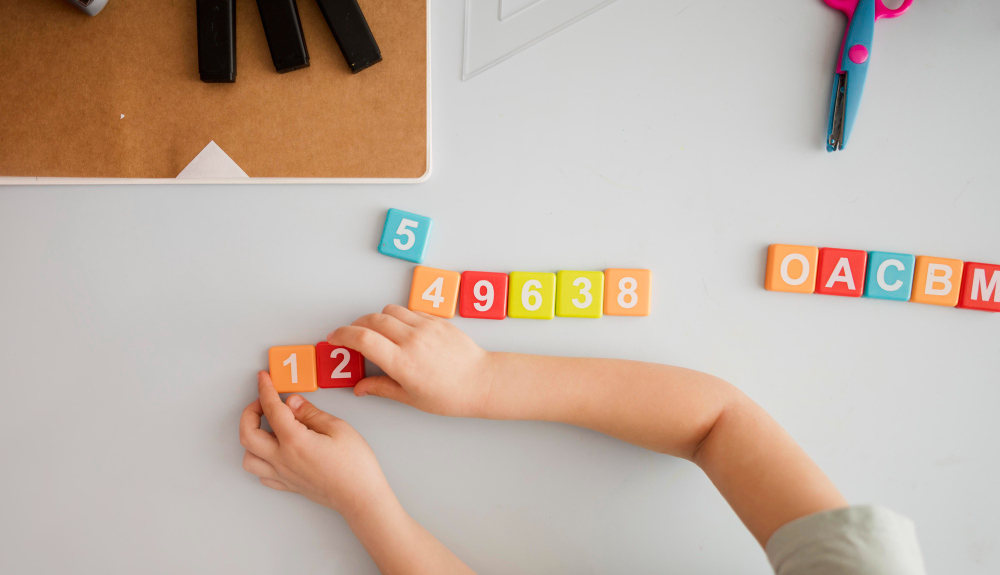Welcome, readers. As a language arts enthusiast and a homeschooling advocate, I’m excited to talk about this topic with you and share my innovative approaches to teaching language arts at home.
Language arts, as we know, is a cornerstone of education. It’s the foundation on which we build our ability to communicate, express ourselves, and understand the world around us. But teaching language arts at home can sometimes feel like a daunting task. How do we ensure our children are getting a well-rounded education in reading non fiction children’s books, writing, speaking, and listening, all while keeping them engaged and motivated?
I remember when I first started homeschooling my own children. I was overwhelmed by the responsibility of teaching them language arts. But over time, I discovered that with the right strategies and a bit of creativity, it’s not only possible, but it can also be a lot of fun. If you’re new to homeschooling or just looking for some fresh ideas, I’m here to share some innovative approaches that have worked for me. Let’s get started and transform the way we teach language arts at home.
Understanding the Basics of Language Arts
Before we dive straight into the innovative approaches, let’s take a moment to understand what language arts truly means. It’s a term that’s often thrown around in educational circles, but what does it really mean? Language arts is a multifaceted subject that includes reading, writing, speaking, and listening. Each of these components play a role in a child’s education and overall development.
Reading is the gateway to knowledge. It opens up a world of imagination and information for children, helping them to understand different perspectives and cultures. Whether it’s fiction or non-fiction children’s books, each genre offers unique learning opportunities.
Writing, on the other hand, is a form of self-expression. It allows children to articulate their thoughts, ideas, and emotions. It also helps them to develop their critical thinking skills as they learn to construct arguments and narratives.
Speaking and listening are often overlooked, but they are just as important. Speaking helps children to articulate their thoughts verbally, enhancing their communication skills. Listening, meanwhile, is about understanding and interpreting the spoken language. It’s a skill that aids in effective communication and empathy.
So, as we can see, language arts is not just about reading and writing. It’s a comprehensive subject that plays a pivotal role in a child’s cognitive and emotional development. Now that we have a solid understanding of what language arts involves, let’s explore some innovative ways to teach these skills at home.
Innovative Approaches to Teaching Reading
Reading is a journey of exploration and discovery. It’s a skill that not only aids in academic success but also fosters curiosity, empathy, and a lifelong love for learning. Here are some innovative ways to make reading an exciting adventure for your homeschooler.
- Encourage Reading of Both Fiction and Non-Fiction Children’s Books
One of the best ways to foster a love for reading is to expose your child to a variety of genres. Fiction books ignite imagination, teach moral values, and help children understand complex emotions. Non-fiction children’s books, on the other hand, feed their curiosity about the world, providing factual information about a wide range of topics from science to history. A balanced diet of both fiction and non-fiction can make reading a well-rounded and enriching experience.
- Use of Interactive E-books and Audiobooks
In this digital age, e-books and audiobooks can be a great addition to your child’s reading repertoire. Interactive e-books often come with features like word highlighting and read-aloud options, which can be particularly helpful for early readers. Audiobooks, meanwhile, can enhance listening skills and are a great way to enjoy stories during car rides or quiet time. E-readers and audiobooks are great because they are small, easily portable and can hold many adventure non fiction books at once.
- Incorporate Reading into Daily Activities
Make reading a part of your child’s everyday life. This could be as simple as reading recipes together while cooking, or road signs while driving. You could also set up a cozy reading nook at home to make reading feel special. The goal is to show your child that reading isn’t just a school activity, but a part of everyday life.
Creative Ways to Teach Writing
Writing is more than just putting pen to paper. It’s a powerful tool for self-expression, creativity, and critical thinking. Here are some innovative ways to inspire your child to write and help them hone their writing skills.
- Introduce Journaling or Blogging
Journaling is a fantastic way for children to express their thoughts, feelings, and experiences. It’s a private space where they can explore their inner world, practice writing, and reflect on their personal growth. If your child is comfortable sharing their thoughts with a wider audience, you might consider helping them start a blog. This can be a fun project that encourages regular writing and can even help them learn about digital literacy.
- Use Creative Writing Prompts
Writing prompts can spark creativity and make writing more enjoyable. These could be anything from “Imagine you’re an astronaut exploring a new planet” to “Write a letter to your future self”. The key is to make the prompts engaging and open-ended, allowing your child to exercise their imagination.
- Encourage Writing Letters to Family Members or Pen Pals
In this digital age, the art of letter writing may seem old-fashioned, but it’s a wonderful way to practice writing. Writing letters to family members, friends, or pen pals can make the activity more meaningful and enjoyable for your child. It also provides a real audience for their writing, which can be a powerful motivator.
Remember, the goal isn’t to create perfect writers but to inspire them to express their thoughts and ideas through writing.
Enhancing Speaking and Listening Skills
Speaking and listening are two sides of the same coin, both integral to effective communication. They are skills that go beyond the classroom, helping children navigate social interactions and understand the world around them. Here are some innovative ways to enhance these skills at home.
- Use of Storytelling and Oral Presentations
Storytelling is a powerful tool for developing speaking skills. Encourage your child to retell stories they’ve read, or better yet, create their own. This not only enhances their verbal communication skills but also fosters creativity and imagination. Similarly, oral presentations on topics of their interest can boost their confidence and public speaking skills.
- Incorporate Listening Activities such as Audiobooks or Podcasts
Listening is an active skill that requires concentration and understanding. Audiobooks and child-friendly podcasts are excellent resources for honing this skill. They can listen to a story or a podcast episode and then discuss it with you. This encourages active listening and comprehension.
- Practice Conversation Skills through Role-Play
Role-play is a fun and interactive way to practice both speaking and listening skills. It could be a simple role-play like ordering food at a restaurant or complex ones like acting out a scene from a play. This activity not only enhances their communication skills but also fosters empathy as they step into the shoes of different characters.
Technology in Language Arts
In the 21st century, technology has become an integral part of our lives, and education is no exception. When used effectively, it can be a powerful tool to enhance learning and make it more engaging. Let’s explore how technology can be leveraged in teaching language arts at home.
- Educational Apps and Online Resources
There’s a plethora of educational apps and online resources designed to make learning language arts fun and interactive. For instance, there are apps for phonics, spelling, grammar, and vocabulary that offer a game-based learning experience. Similarly, there are online platforms that provide a vast library of e-books and audiobooks. These resources can supplement your homeschool curriculum and provide additional practice in a fun and engaging way.
- Potential Drawbacks of Technology in Education
While technology offers numerous benefits, it’s important to use it judiciously. On the one hand, it can make learning more interactive, personalized, and accessible. On the other hand, excessive screen time can have negative effects on children’s physical health and social skills. Therefore, it’s crucial to strike a balance. Use technology as a tool to enhance learning, not replace traditional learning methods.
Tips for Maintaining Engagement and Motivation
Keeping a child engaged and motivated can be one of the biggest challenges in homeschooling. But with some creativity and flexibility, you can make learning language arts an enjoyable and rewarding experience. Here are some tips to help you along the way.
- Setting a Routine
A routine provides a sense of structure and predictability, which can be comforting for children. However, it’s important to strike a balance between structure and flexibility. While it’s good to have a routine, be open to spontaneous learning opportunities that may arise.
- Making Learning Fun and Engaging
Incorporate games, hands-on activities, and real-life applications to make learning more engaging. For instance, you could have a spelling bee contest, create a storybook together, or write a letter to a local hero. The key is to make learning relevant and fun.
- Importance of Praise and Positive Reinforcement
Positive reinforcement can go a long way in motivating a child. Praise their efforts, not just their achievements. This fosters a growth mindset and encourages them to keep trying, even when they find something challenging.
Remember, every child is unique and what works for one may not work for another. The beauty of homeschooling lies in its flexibility to adapt to each child’s needs and interests.
Conclusion
Well, we’ve made it to the end, I hope this guide has sparked some new ideas and enthusiasm. As you venture into homeschooling, remember to be kind to yourself and your child. It’s a process of exploration, discovery, and growth for both of you. And above all, don’t forget to infuse a bit of fun into the process.
Homeschooling isn’t about mirroring the traditional classroom setup. It’s about crafting a unique learning experience that resonates with your child’s individual needs and interests. Whether it’s diving into an intriguing book, penning a heartfelt letter to a friend, or tuning into an engaging podcast, every activity is a stepping stone towards learning and growth with https://www.bbbg.org/.

